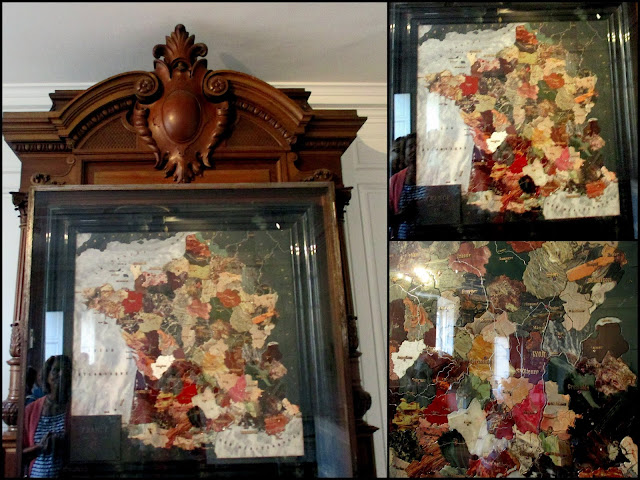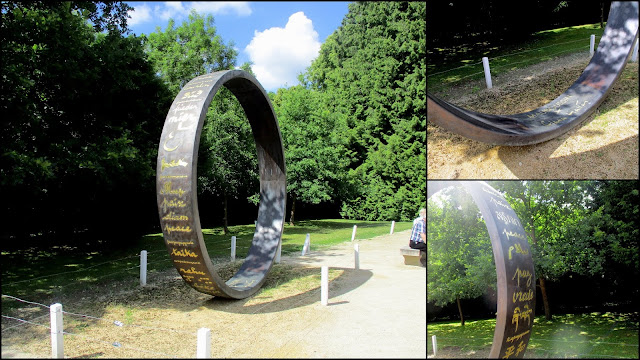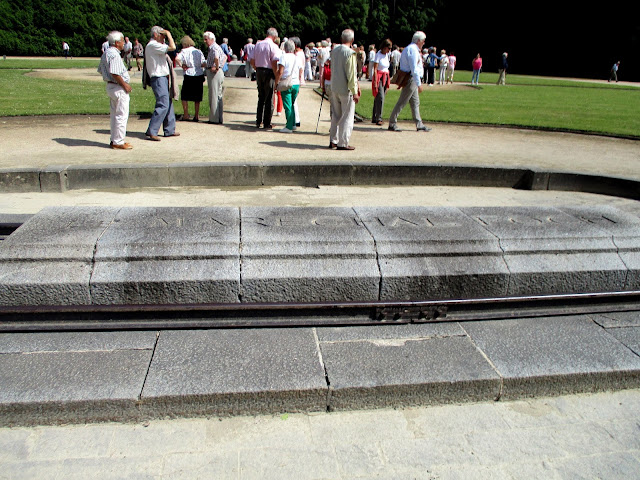The town De Panne is one of the most popular beach resorts in Belgium primarily because of its beach which is the widest in the country and covered in white sand. The town is of great importance in Belgian history as it is here that the first King of Belgium, King Leopold I first set foot in the territory in 1831. It was also the dunes between here and Dunkirk that were the scenes for the evacuation of British troops in WW2 that proved vitally important. Both of these events are honoured in the town with a monument for King Leopold and an interesting World War 2 Museum.
Today it is a popular destination for tourists especially in summer. Aside from the beach itself, the surrounding dunes are the oldest in Europe and make for an interesting setting for a stroll.
My friend Nicole each year loves to stay a week at the Belgian coast, although the weather is not guaranteed at all and it can get pretty cold and rainy no matter when you are going.
Before the high season started she rented a flat on the 3rd floor

It was really nice only there was no lift and we had to climb up the stairs !

It was very modern and we had all we needed, even two bedrooms.
The view towards the town
and the view from the apartment ! There were not many people there and the beach was empty, because it still was quite cool and the summer holidays hadn't started yet.

There was enough for kids to play
x
Normally the beach is packed with people laying side by side !
The sea can be very rough, as we had one day ! The waves were as high as a one storage house !
Unfortunately the sea front had been completely demolished, only very few houses are still standing between these modern monsters.

Of course you can make more money with high buildings and a lot of flats then renovate charming little houses ! It's a shame, because the whole Belgian coast looks like this.
Walking along the sea front

These vehicles are called "cuistax" and exist since 1853. You can rent them in all sizes from one to 8 people all along the Belgian coast.

Behind the high buildings along the beach La Panne is a pretty little town, with lovely houses. Very well taken care of and decorated.
Somebody sitting in front of the house ....
modern statue

An overall view
Each afternoon we had a drink or an ice cream at this very comfortable restaurant. I loved the lamps which looked like huge eggs.
Tuesday, June 26, 2018
LA PANNE BELGIAN COASTAL TOWN
Posted by Ingrid at Tuesday, June 26, 2018 7 comments
travel, vacation, Jordan, Egypt, Spain, Turkey, La Panne, Our World
Monday, June 18, 2018
COMPIEGNE - NAPOLEON's PALACE
June 19, 2018
Part II
On our senior citizen excursion we also visited the Palais of Compiègne. It was an enormous building !
Built by Louis XV and Louis XVI, and remodelled by both Napoleon I and Napoleon III, the Palais de Compiègne was a centre for court life and the exercise of power. The originality and beauty of this biggest neo-classical palace in France, alongside Versailles and Fontainebleau, is one of the three largest royal and imperial residences in France.
The 1337 !! room palace, (I haven't counted them) originally built for Louis XV, hosted Napoléon III's dazzling hunting parties, which drew aristocrats from all around Europe. We could see the the empress's bedroom and a ballroom lit by 15 chandeliers.
The French Revolution led to the dispersion of the palace’s furniture in 1795 and most of them were sold, with only some of the pieces being returned today. That's why it seemed to me that the furniture was dispersed a bit everywhere and some rooms looked rather like a storage room. But I have to add, the palace was not ready for tourist time in July when we visited on June 7, there were renovations going on and not all furniture was displayed.
Anyway what we saw was quite impressive

The palace from outside

The staircase to the rooms
A welcoming entrance !

Along the huge hall there were these busts. Below in the middle is Napoleon I, and the empress Eugenie, wife of Napoleon III

Looking up

Beautiful golden and crystal lustres

Dining room

Tapestries

Games room
Napoleon's bed

his room
and desk

The library

Empress Eugenie's tea room

Her reception room called "the blue room"
and her "royal bed" ! She had to go up the stairs to lay down !
A beautiful table

and the Chapel
Mirrors everywhere over the open fires
The hallway to the rooms. It's also used for painting exhibitions.
Ballroom, which during the war was used as hospital for wounded soldiers
Very elaborated clocks
and vases
The lustre hanging over the staircase

and a closet with French map in marble (I think that's what the guide said)
The furniture was used by Napoleon III. It was a little confusing because the different styles had been put together temporarily until the renovation will be finished.
The whole history of this palace is here
Posted by Ingrid at Monday, June 18, 2018 5 comments
travel, vacation, Jordan, Egypt, Spain, Turkey, Compiègne, Napoleon's Palace, Our World
Tuesday, June 12, 2018
COMPIEGNE - ARMISTICE MEMORIAL WW I
PART 1
Each year our city organizes a trip for their seniors. This year they had chosen to visit Compiegne
We left Waterloo at 7 am and made a breakfast stop half way.

We were offered a cup of coffee and a croissant.
Then we continued and stopped for lunch in a charming little village, Pierrefonds, which is overlooked by the imposing Medieval Castle of the Sleeping Beauty.
The restaurant is located in a park of 5.5 hectares of greenery and forest, bordered by the thermal water lake.

The lunch was delicious. The starter was a paté de hare, the main course a leg of a guinea fowl and Sauerkraut. The dessert was a Norwegian omlette.

the entrance

and the surroundings.
After this delicious lunch, the bus took us to the Clairiere de l'Armistice a war memorial commemorating the armistice with the signature of the Germans that ended World War I in 1918. During World War II, Adolf Hitler deliberately chose the same location to sign the Second Armistice at Compiègne after Germany won the Battle of France.
You can visit four main attractions: the Glade of the Armistice with a statue of Ferdinand Foch, the Alsace-Lorraine Memorial, the Clearing of the Armistice, also called Rethondes Clearing, and a replica of a train car.
This year is the 100th anniversary of the end of the First World War, which finally came with the signing of the Armistice in a railway carriage in the middle of a wood 80 kilometres north east of Paris on 11th November 1918.
After three months of closure the museum on this highly significant historic site, containing a replica of the original railway carriage and many artifacts, documentation and photographs explaining the events, it was reopened with a new 500m² extension to its original 1927 building.
Unfortunately we couldn't visit the museum we had not enough time. But the site itself was very interesting.

I didn't take my helicopter to take this photo, but found it somewhere on internet. At least it gives you an idea of the whole site.


Memorials
The site and the rails
The museum from far
The museum which contains the replica of the wagon in which the armistice was signed, the original had been destroyed in Berlin in 1945 on the orders of Hitler.

The replica
The entrance
and just besides stood the
Renault FT 17 WW1 tank “General Estienne”
A view on the General Foch monument.
Posted by Ingrid at Tuesday, June 12, 2018 8 comments
travel, vacation, Jordan, Egypt, Spain, Turkey, Armistice memorial WW I, Compiegne, Our World














































